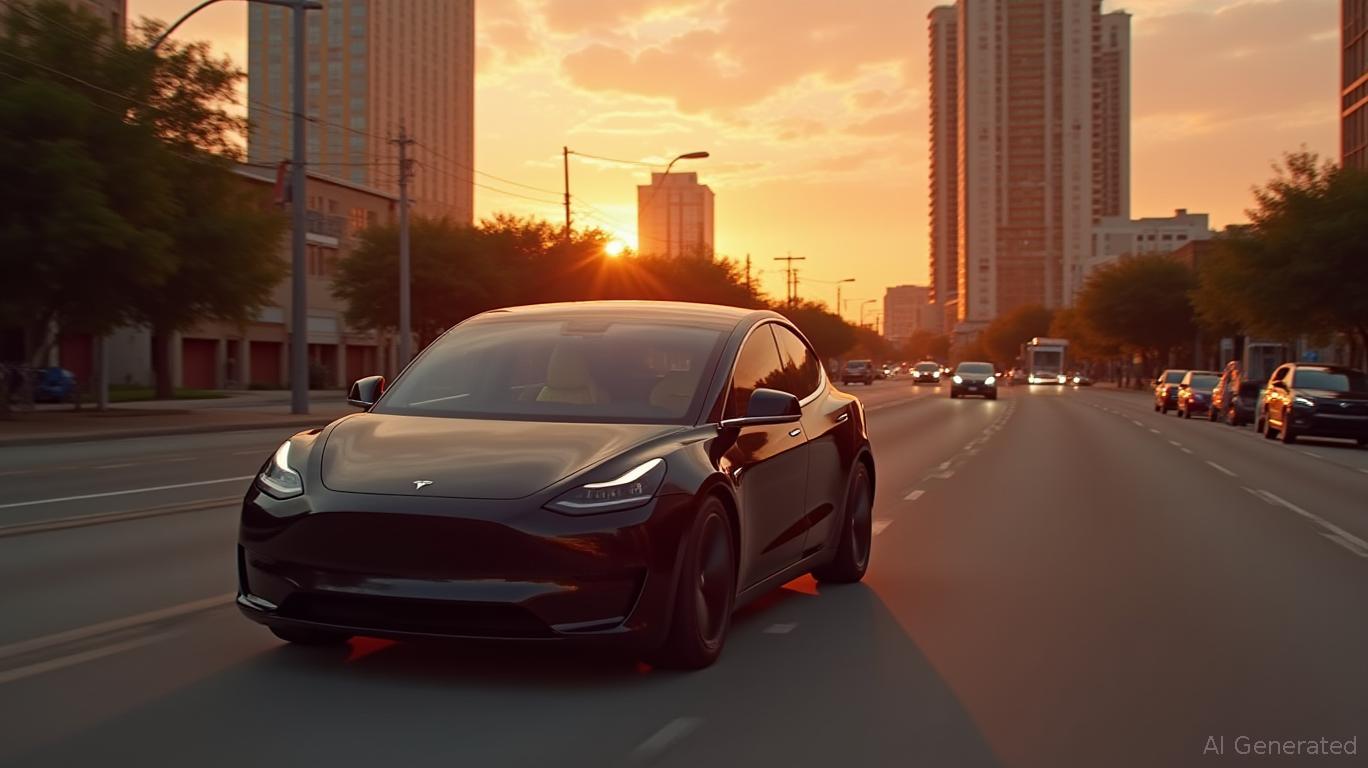Tesla's Robotaxi Launch: Navigating Immediate Hurdles to Autonomous Dominance
On June 22, 2025,
began testing its long-awaited autonomous taxi service in Austin, Texas—a milestone in its decade-long push to redefine transportation. Yet the launch, while symbolic, underscores a stark reality: Tesla's vision of a world powered by robotaxis faces immediate execution risks even as its long-term potential remains transformative. For investors, the question is whether to bet on Tesla's ability to turn today's cautious pilot into tomorrow's mobility revolution.
The Short-Term Reality: A Slow Start
Tesla's launch is a tightly controlled experiment. A fleet of just 10–20 unmodified Model Y vehicles operates within a geofenced area of south Austin, with rides limited to invite-only users. Key constraints include:
- Safety oversight: A Tesla employee sits in the front passenger seat during rides, though they cannot control the vehicle.
- Technical limitations: The Full Self-Driving (FSD) software, now dubbed “FSD Unsupervised,” handles basic routes smoothly but struggles with complex scenarios like school buses or adverse weather.
- Regulatory friction: Texas lawmakers and safety advocates have demanded delays until new self-driving laws take effect in September 2025.
The service's flat $4.20 fare and restricted hours (6 a.m. to 12 p.m.) further highlight its experimental phase. Competitors like Waymo, by contrast, have already deployed over 1,500 autonomous vehicles across multiple cities and completed 10 million rides, using lidar-based systems that Tesla's camera-only approach aims to undercut on cost.
Investors are already pricing in skepticism. Tesla's shares have fluctuated sharply in recent quarters, reflecting concerns over delayed timelines, regulatory probes into FSD safety, and declining sales in key markets like Europe. A dip to $150 billion in market cap in late 2024—partly due to Musk's social media controversies—underscores the risks tied to its leadership and reputation.
The Long-Term Vision: A Mobility Revolution
Despite the near-term hurdles, Tesla's ambitions are audacious. CEO Elon Musk has vowed to scale the service to “hundreds of thousands” of vehicles by late 2026 and eventually allow Tesla owners to convert their personal cars into robotaxis. This “Airbnb model for cars” could create a massive revenue stream, leveraging Tesla's existing fleet of over 3 million vehicles.
The potential market is vast. Autonomous mobility could generate $7 trillion annually by 2050, according to Morgan Stanley, with Tesla's software-driven approach offering a cost advantage. Unlike Waymo, which uses expensive lidar sensors, Tesla relies solely on cameras—a strategy that could reduce vehicle costs by up to $10,000 per unit, a critical edge in a price-sensitive market.
Moreover, Tesla's software-first philosophy, which allows over-the-air updates, positions it to iteratively improve FSD. An upcoming 4.5x parameter boost to its neural networks could address current limitations, such as object recognition in complex environments. The planned 2026 launch of the Cybercab—a purpose-built autonomous vehicle without steering wheels or pedals—adds another layer to its arsenal.
Investment Considerations: Risk vs. Reward
The calculus for investors hinges on balancing Tesla's execution risks against its structural advantages:
- Near-term risks: Regulatory pushback, software glitches, and Musk's track record of missing deadlines (e.g., the 2020 robotaxi pledge) could prolong the pilot phase. A federal investigation into FSD safety and lawsuits over its capabilities add further headwinds.
- Long-term upside: If Tesla can scale its robotaxi service reliably, it could capture a dominant share of a nascent market. Analysts like Wedbush's Dan Ives project Tesla's market cap could hit $2 trillion by late 2026 if the service succeeds.
A Balanced Approach
Tesla's robotaxi launch is a critical test of its ability to execute on Musk's vision. While the near-term path is fraught with regulatory and technical challenges, the company's software edge, existing scale, and potential to monetize its fleet offer a compelling long-term narrative.
For investors, this is a “wait-and-see” scenario. Short-term volatility is likely, given execution risks and regulatory scrutiny. However, dips could present buying opportunities for those willing to bet on Tesla's long-term dominance in autonomous driving. A key milestone will be the service's expansion beyond Austin by late 2025 and the Cybercab's 2026 launch.
In the end, Tesla's robotaxi gamble is as much about reshaping mobility as it is about proving that its software-first strategy can outpace rivals. The stakes are high, but so is the potential payoff.
Final Note: Investors should monitor Tesla's stock performance relative to broader tech and automotive sectors, as well as FSD software updates and regulatory developments. A patient, long-term perspective may be rewarded—if Tesla can turn today's cautious steps into tomorrow's autonomous revolution.

Comments
No comments yet